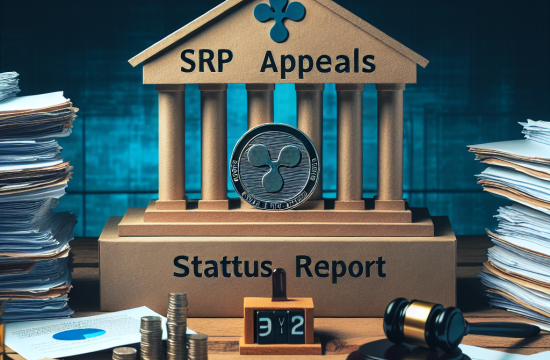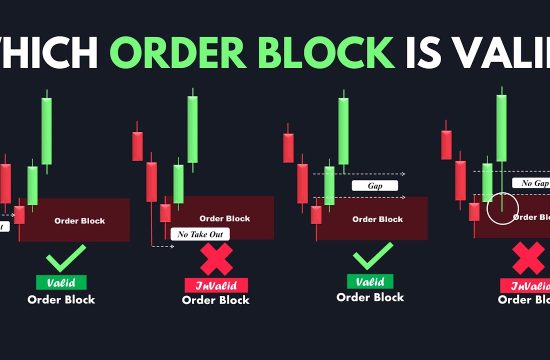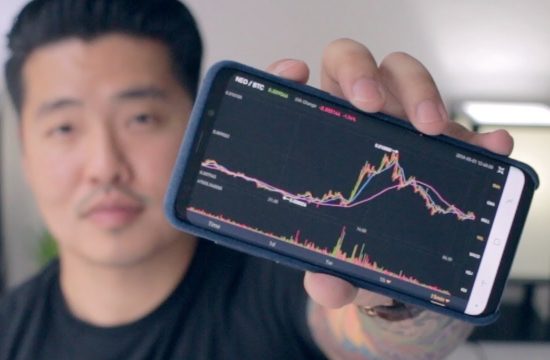Understanding Bitcoin Fundamentals
What is Bitcoin?
Let’s kick things off with the basics. Bitcoin is a type of cryptocurrency, a digital currency that operates independently of a central bank. It’s decentralized, which is super cool because it means no government or financial institution controls it. A buddy of mine once explained it like this: imagine sending cash to your friend through the internet without needing a bank! That’s Bitcoin for ya.
Bitcoin transactions are stored on a public ledger called the blockchain. Think of it like a big, shared spreadsheet that everyone in the network can see. This transparency is part of what makes Bitcoin secure. Once a transaction is recorded, it’s nearly impossible to change. So, with Bitcoin, you’ve got a level of security that traditional currencies can’t quite match.
Understanding Bitcoin’s underlying tech is crucial for anyone looking to trade. It’s not just about buying low and selling high; it’s about comprehending what you’re actually investing in. Take the time to research Bitcoin, how it works, and why it matters in the financial ecosystem.
How Does Trading Work?
If you want to dive into Bitcoin trading, you need to grasp the basics of how actual trading works. At its core, trading is about buying Bitcoin at a lower price and selling it when the price goes up. Sounds simple, right? But there’s a whole world of strategy behind it. Looping back to my early days, I remember being overwhelmed by charts and price movements. It can seem like a whole other language!
One fundamental concept is market orders versus limit orders. A market order is an instruction to buy or sell Bitcoin immediately at the current market price. In contrast, a limit order lets you set a specific price at which you want to buy or sell. Picture it like setting a sale price for your old video games—you’d want to get the best deal possible, right?
Keep an eye on the market trends as you trade. The crypto market can be super volatile, and prices can swing wildly within minutes. It’s essential to pay attention to news, social media sentiment, and even global events that might impact Bitcoin’s price. The trading landscape is ever-changing, and staying informed is half the battle.
Essential Trading Tools
Now that you’re getting the hang of what Bitcoin is and how trading works, let’s talk about some tools that can aid your trading journey. Think of these as your trusty sidekicks. First up is a good cryptocurrency exchange where you can buy and sell Bitcoin. Some popular options include Coinbase, Binance, and Kraken. Each has its unique features, so check them out and find one that fits your style.
Then there are trading charts and indicators, which can provide valuable insights into market trends. I remember feeling like a detective when I first started analyzing charts. Patterns like “head and shoulders” or “double bottoms” give clues about potential price movements. You don’t have to be a math whiz, but some basic understanding of chart analysis can go a long way!
Lastly, consider using portfolio management tools. These apps can help track your investments, overall profitability, and even set alerts for when prices hit a target. Believe me, when you’re juggling multiple trades, having everything organized makes it way more manageable.
Developing a Trading Strategy
Setting Goals and Risk Management
All right, it’s time to get serious. Before you jump into trading, you need a solid plan and goals. What do you want to achieve with your Bitcoin trading? Are you looking for quick profits, or is this more of a long-term investment? Having clear objectives can guide your trading decisions.
And let’s not forget about risk management. Don’t put all your eggs in one basket! I learned this the hard way. Diversify your investments to spread out the risk. Set a stop-loss order to minimize your losses if the market goes south. The idea is to protect your profits and limit your losses for long-term sustainability.
Regularly review your strategies and results. What worked? What didn’t? Adjust as necessary. Trading isn’t about getting it right every time; it’s all about learning from your experiences and refining your approach.
Analyzing Market Trends
Market analysis is where you can get creative with your trading strategy. Familiarize yourself with fundamental analysis, which involves looking at news events, regulatory changes, and economic factors that could impact Bitcoin’s price. I make it a habit to read various crypto news sources daily to stay informed. You never know what could influence the market!
Then there’s technical analysis, which relies on charts and historical data. This is where those trading tools I mentioned earlier come in handy. Look for trends and indicators that could hint at future price movements. It’s like looking for patterns in nature—after a while, you start to see them everywhere!
Lastly, never underestimate the power of market sentiment. The emotional behavior of traders can sway prices significantly. Follow social media and community forums. Sometimes, the chatter can give clues that charts don’t reveal. Be in the know about what others are thinking and feeling; it’s part of the game!
Staying Informed and Adapting
In the world of Bitcoin trading, change is the only constant. To stay ahead, you need to keep learning and adapting. Subscribe to newsletters, join online communities, and attend webinars or workshops. Knowledge is power, my friends, and the more informed you are, the better your trading decisions will be.
Networking with other traders can also provide insights that you might not have considered. Sharing experiences, strategies, and resources can enhance your trading game. I remember chatting with an experienced trader over coffee. It was like a light bulb went off; I gained so many new perspectives!
Finally, don’t be afraid to experiment. Sometimes the best strategies come from trying something new. Don’t stick rigidly to one way of trading; remain flexible and be open to change. It’s an evolving market, and being able to pivot can make all the difference.
Understanding Security Best Practices
Protecting Your Investments
Security isn’t just a buzzword; it’s a top priority in crypto trading. You wouldn’t leave your front door wide open, so why do the same with your investments? One of the first steps is to choose a secure exchange and enable two-factor authentication. Trust me, it may be a hassle, but it’s worth it for that extra layer of protection.
Consider using a hardware wallet for storing your Bitcoin. This adds a physical layer of security that online exchanges can’t provide. I remember feeling so relieved once I transitioned to a hardware wallet; it felt like I was putting my Bitcoin in a safe. Just remember to keep that wallet in a secure place, too!
And always be cautious about phishing scams and suspicious links. If an offer seems too good to be true, it probably is. I learned the hard way after clicking a link that led to a sketchy site. Staying vigilant can save you from major headaches down the line.
Regulatory Awareness
The regulatory landscape surrounding Bitcoin is always shifting. It’s essential to stay informed about the regulations in your country. Some places embrace cryptocurrency, while others are tightening the reins. Being aware of these regulations can help you navigate the trading waters and avoid potential legal issues.
Don’t forget to keep a lookout for tax obligations related to your trading gains. You might want to consult with a tax professional specializing in cryptocurrencies to ensure that you’re on the right track. I mean, no one wants the taxman knocking at their door!
Moreover, participate in discussions about how regulations evolve and shape the future of Bitcoin. Being part of the conversation can provide insights and help prepare for changes that could impact your investments.
Re-evaluating Your Security Measures
Creating a robust security protocol is not a one-and-done deal. Regular re-evaluation is essential. Set aside time every now and then to review your security practices. Ask yourself if they’re still effective or if it’s time to level up.
As I delved deeper into trading, I found that staying updated on the latest security trends and practices is crucial. Cyber threats are continuously evolving, so keeping abreast of new security protocols can keep your investments safe. Join communities focused on crypto security to learn from others’ experiences.
Finally, ensure your software and systems are updated. Outdated software can be the weak link in your security armor. A simple update can fix vulnerabilities that hackers might exploit. It’s a small step that can lead to significant protection for your assets.
Final Thoughts on Trading Bitcoin
Embracing the Journey
Trading Bitcoin is an exhilarating journey filled with ups and downs. I can’t stress enough that it’s okay to make mistakes; they’re part of the learning curve. Celebrate your wins, learn from your losses, and always keep your end goal in sight. Each trade is an opportunity for learning.
As you dive into Bitcoin trading, remember that patience and perseverance are key. Don’t let the thrill of quick profits lead you to risky decisions. Take your time to learn, grow, and become a better trader. The crypto world is a marathon, not a sprint!
Ultimately, stay passionate about what you’re doing. I genuinely love the excitement and innovation in the cryptocurrency space. If you keep that enthusiasm, your trading experience will be much more enjoyable!
FAQs
1. What is the best way to start trading Bitcoin?
The best way to start is to educate yourself about Bitcoin and trading strategies. Begin by choosing a reputable exchange to buy Bitcoin, and consider starting with a small investment while you learn the ropes.
2. How do I keep my Bitcoin investments secure?
Protect your investments by using secure exchanges, enabling two-factor authentication, and considering a hardware wallet for storage. Always stay vigilant against phishing scams.
3. Can I make money trading Bitcoin?
Yes, you can make money, but it comes with risks. Successful trading requires careful analysis, strategic planning, and a willingness to learn from both wins and losses.
4. What are some common mistakes to avoid in Bitcoin trading?
Some common mistakes include emotional trading, neglecting to do thorough research, and not having a clear risk management strategy. It’s important to stick to your trading plan and stay informed.
5. How often should I review my trading strategy?
Regularly review your trading strategy, ideally after every few trades or at least monthly. Adjust your strategies based on your experiences, market conditions, and new information.
Related Content
- CRYPTO ALERT: TIME TO SELL!?
- Ethereum Support and Resistance Levels: Latest Elliott Wave Forecast for ETH and Microstructure
- Will A Debt Spiral Lead To Bitcoin Adoption?
- European Union Finalizes Digital ID Wallet Agreement, Hints at Digital Euro Integration
- What Are The Ethics Of Sharing Scammers’ Real Names?









